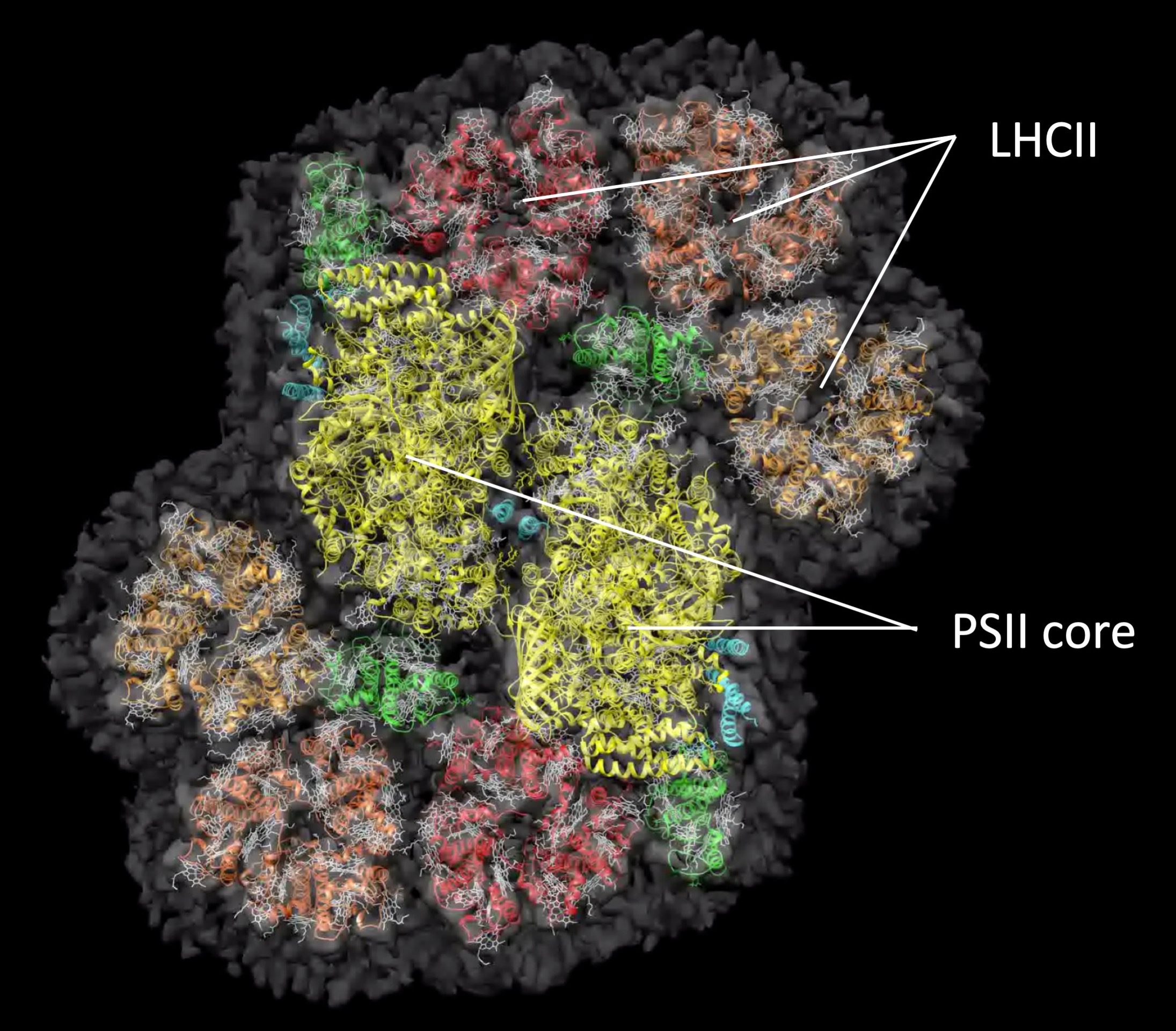Structure of the giant photosynthetic membrane protein complex of the green alga Chlamydomonas using cryo-electron microscopy
Photosynthesis in plants is the most efficient system for utilizing light energy on the planet. Photosynthetic organisms use light energy to synthesize carbohydrates from water and carbon dioxide. The initial process of converting light energy into usable chemical energy is called a photochemical reaction and is performed by several membrane protein complexes in the thylakoid membrane in the chloroplast. This process is mainly performed with photosystem I (PSI) and photosystem II (PSII), and these two can work together in response to environmental changes to collect light most efficiently. However, they exhibit various structures depending on the type of organism and the environment. In our research, we want to clarify the detailed mechanism of photosynthesis by investigating the difference in the structure of the photosynthetic apparatus depending on the species.
The research team led by Professor Jun Minagawa of NIBB has used the newly developed surface surfactant, non-ionic amphipol, to stabilize the largest PSII supercomplex preparation ever from a green alga Chlamydomonas. In NIPS, we rapidly froze this sample and examined it using cryo-electron microscopy, revealing its structure at 5.6 Å resolution (Fig. 1). As a result, we found that the algal light-harvesting antenna protein complexes of LHCII trimers surrounding the pair of the central PSII core complex are six rather than four in higher plants, and they bind more loosely (at a greater distance) than those of higher plants. This suggests that the migration of light energy from LHCII to PSII core takes different route(s) from those of higher plants.
This result not only clarified the characteristic photochemical reaction mechanism of Chlamydomonas, but this knowledge has also helped create more efficient clean energy in places with large environmental changes in the future.

Collaborative Researcher
Raymond N Burton-Smith, Akimasa Watanabe, Ryutaro Tokutsu, Jun Minagawa (NIBB)
Chihong Song, Kazuyoshi Murata (NIPS)
Funding
JSPS KAKENHI, Collaborative Study Program of NIPS
Release Source
Title: Structural determination of the large photosystem II–light harvesting complex II supercomplex of Chlamydomonas reinhardtii using non-ionic amphipol
Authors: Raymond N Burton-Smith, Akimasa Watanabe, Ryutaro Tokutsu, Chihong Song, Kazuyoshi Murata and Jun Minagawa
Journal: Journal of Biological Chemistry
Issue: pii: jbc.RA119.009341 [Epub ahead of print]
Date: Aug 15
URL (abstract): http://www.jbc.org/content/early/2019/08/15/jbc.RA119.009341.abstract
DOI: 10.1074/jbc.RA119.009341

